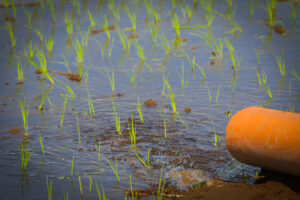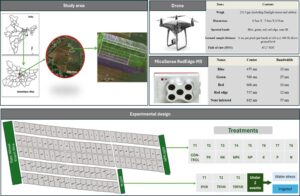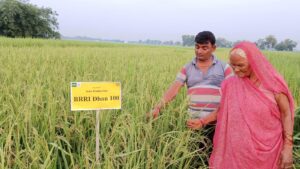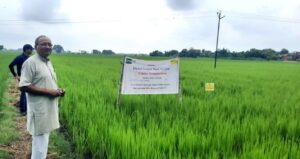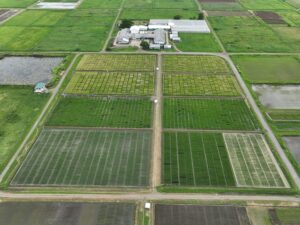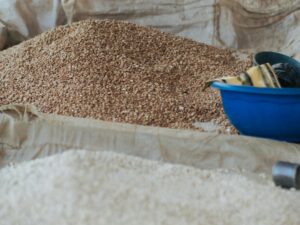“Twenty years is nothing,” say the lyrics of a 1930s’ song. But, in 2015, as the Latin American Fund for Irrigated Rice celebrates its 20th anniversary, many of the Fund’s members might not agree. For them, FLAR‘s 20 years have been filled with achievement, and they’re looking forward to more.
From the 1960s to 1980s, international rice breeding in the Latin America and the Caribbean (LAC) region carried the brand of the International Center for Tropical Agriculture (CIAT). But, by the mid-1990s, funding for CIAT’s Rice Program had declined, and there was a lot of uncertainty about the future. This had many people worried, and for a good reason, because CIAT had contributed to the development of about 60% of the more than 400 improved varieties released in LAC.
Pioneering vision
Uncertainty and concern plus the pioneering vision of a few key people provided the necessary inputs for the groundbreaking creation of FLAR. Time has proven that they had the right idea.
CIAT took the initiative to create FLAR and soon won support for it from Colombia’s National Rice Growers’ Federation (Fedearroz), Uruguay’s National Agricultural Research Institute (INIA), Venezuela’s Western Plains Association of Certified Seed Producers (Aproscello), and the Rice Institute of Rio Grande Do Sul (IRGA) in Brazil. The Fund has since evolved into a strong and fully regional organization, which encompasses 36 public and private sector partners in 17 countries, and it influences two-thirds of the 5.7 million hectares sown to paddy rice in LAC and about 80% of the 27.8 million tons produced.
Through FLAR, diverse actors in the rice value chain—including farmers’ associations, national agricultural research institutes, government ministries, seed companies, and the rice milling industry, together with CIAT—all invest in a shared agenda to ensure that research and technology transfer meet the needs of its members. A unique feature of the Fund is its ability to reconcile diverse interests around the common pillar of technology development.
Testimony to success
Every year, FLAR delivers elite rice germplasm to a network of 23 breeding programs, operated by about 150 rice breeders and technicians at more than 100 experimental stations. The 54 rice varieties released so far in 14 countries give a strong testimony to the success of FLAR’s breeding effort.
Juana Viruez, a rice breeder at the Center for Research on Tropical Agriculture in Bolivia, says that FLAR’s germplasm has been fundamentally important for her country. Of the 30 rice varieties released by the center, six were selected from FLAR nurseries, including MAC-18, the country’s most widely grown variety. Roberto Celi of Ecuador’s National Institute for Agricultural and Livestock Research (INIAP), explains how receiving advanced lines from FLAR saves time and resources in field evaluations. INIAP also uses FLAR materials as parental lines in its own crosses.
Rice breeding, however, is just part of FLAR’s portfolio. Partners in 12 countries work with the Fund to adopt the best agronomic practices for their agroecosystems. This work has had a direct impact on more than 500,000 hectares, with average rice yields increasing by 1.5 tons per hectare and production costs declining by 20–30%.
Mario Torres of Cindearroz, a consortium of 13 organizations working on rice research and development in Mexico, believes that new long-grained varieties, introduced by FLAR and released by the country’s National Institute for Research on Forests, Agriculture, and Livestock (INIFAP)—together with FLAR-supported work on rice agronomy—will make farmers more competitive. “Our goal is to reduce rice imports by 30% over the next 4 years,” says Mr. Torres.
With partners in Mexico and Nicaragua, FLAR has undertaken projects on water harvesting, which aim to switch from rainfed to irrigated rice production. This work has helped smallholder rice farmers to diversify their systems with maize, beans, livestock, and other options, thus boosting rural income and employment, among other benefits. Norman Oviedo, manager of SENUMISA, a private seed company in Costa Rica, suggests that “more should be done on water harvesting in my country and others in the region, where most rice-growing areas are rainfed, even though there’s huge potential to capture runoff water from the rains for irrigation.”
Looking forward
From its inception, FLAR has been an integral part of CIAT, and CIAT has always been a Fund member. The rice research of the two organizations is complementary and more closely aligned than ever with the needs of the end users of the technologies that are delivered.
But it pays to be cautious: FLAR’s past successes with its partners provide no guarantee of future success. In the face of climate change, low yields, pest problems, land degradation, high production costs, inadequate infrastructure, and adverse policies, LAC’s rice sector needs more investment, more partnerships, and more innovation. This is crucial for making rice production more competitive.
Competitiveness is the central theme of the XII International Rice Conference for Latin America and the Caribbean, being held in February 2015 at Porto Alegre, Brazil. Organized by IRGA, CIAT, FLAR, and the Global Rice Science Partnership this is the region’s biggest rice science meeting and also the occasion on which the Fund is celebrating its 20th anniversary.
The organizers couldn’t have chosen a more appropriate theme: “horizons for competitiveness.” The message is that we look forward to seizing new opportunities, no matter how difficult the current situation may seem. FLAR will be there to help bring these opportunities within the reach of all of its members.
___________________
Dr. Graterol is the executive director of FLAR.


